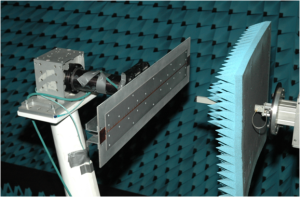Dr. David Jackson, professor of electrical and computer engineering at the Cullen College, recently gave a plenary presentation on the advances in leaky-wave antennas at the 2013 International Union of Radio Science (URSI) Electromagnetic Theory Symposium held in Hiroshima, Japan.
The abstract for his presentation, which was titled "Recent Advances in Leaky-Wave Antennas," is included below.
Recent Advances in Leaky-Wave Antennas
Prof. David R. Jackson, Department of Electrical and Computer
Engineering, University of Houston, USA
Abstract
Leaky-wave antennas (LWAs) use a traveling wave that radiates continuously along a guiding structure in order to produce a focused beam of radiation. Planar LWAs are particularly attractive since they are usually low prolife and easy to manufacture. This presentation will overview recent advances in LWAs, with the main focus on obtaining improved performance at broadside and at endfire.
One of the main challenges has been to design LWAs to allow scanning through broadside, and an overview of different strategies for doing this will be summarized, including both metamaterial-inspired designs and other novel approaches. Results show that it is possible to scan through broadside using either a uniform, quasi-uniform, or periodic type of LWA, something that was not thought possible until fairly recently. Obtaining beams at broadside from a non-scanning leaky-wave antenna at a fixed frequency will also be addressed, and optimized design rules will be discussed. The interesting optical phenomenon of plasmonic directive beaming will then be mentioned, and this will be related to the design of leaky-wave antennas for broadside radiation. Finally, obtaining directive beams at endfire will be discussed, and a modified Hanson- Woodyard condition for optimizing the endfire directivity of a LWA will be presented.
